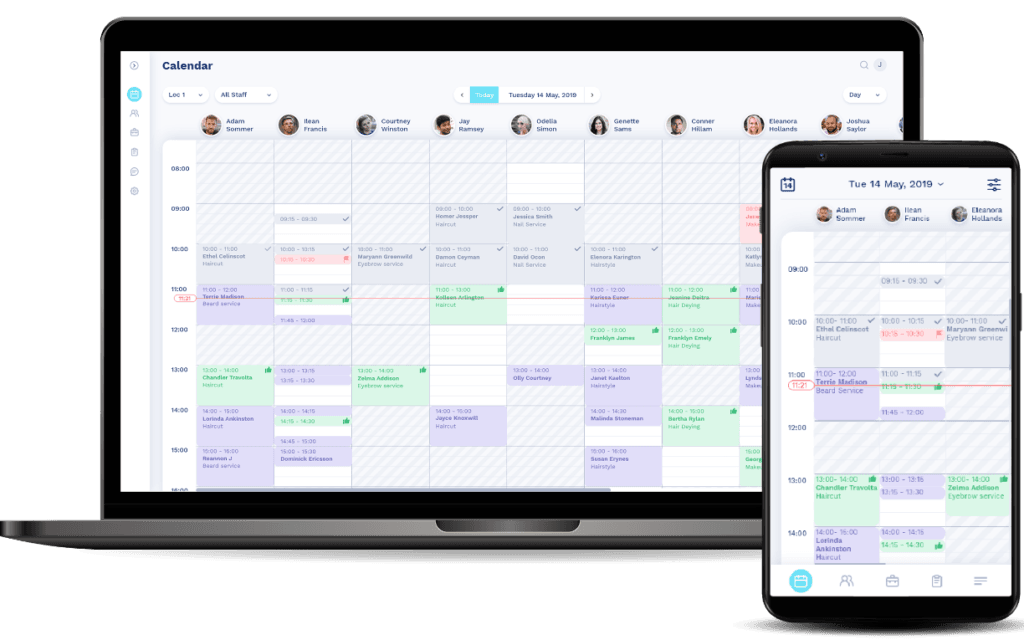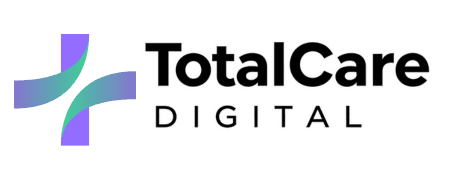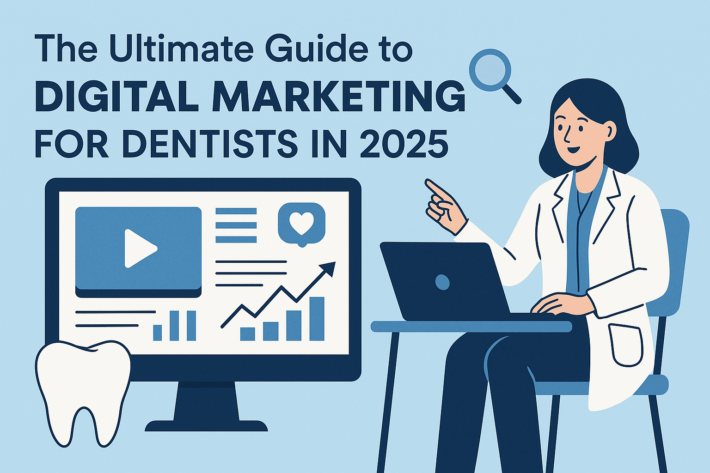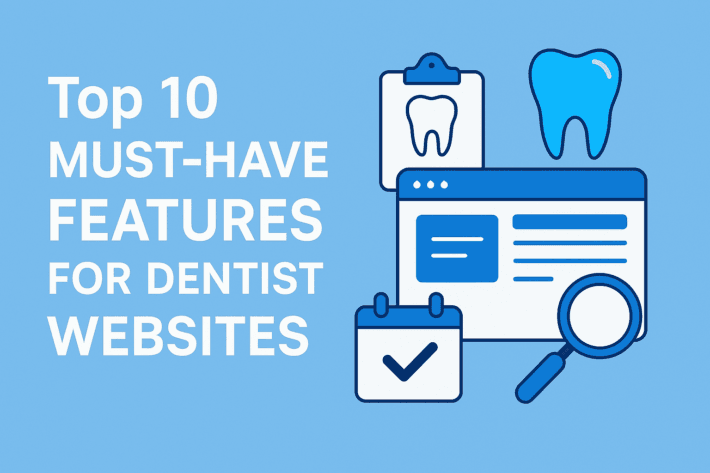Why Great Dental Website Design Is the #1 Lead Generator for Your Clinic

In today’s digital-first world, most people searching for a new dentist won’t start by calling around or asking friends — they’ll go straight to Google. And when they land on your website, their decision to book an appointment is often made in seconds. That’s why dental website design isn’t just about looking modern — it’s your most powerful tool for attracting and converting new patients.
If your website doesn’t build trust, clearly communicate your services, and make it easy to book, you’re missing out on dozens — if not hundreds — of leads every month. And if your competitors are investing in professional, user-friendly websites, they’re likely getting those leads instead.
Let’s explore exactly why dental website design plays such a crucial role in generating leads, what elements matter most, and how you can improve yours to keep your appointment books full.
Your Website Is Your Clinic’s Digital Front Door
When someone searches “dentist near me,” your website is often their first impression of your clinic. Just like a physical location, it needs to be clean, welcoming, and easy to navigate.
Patients today are quick to judge. If your website looks outdated, cluttered, or confusing, they may assume your clinical services are the same. According to various behavioral studies, users form an opinion about a website in less than one second — and that snap judgment heavily influences their trust and likelihood to book.
Good dental website design makes patients feel like they’ve already found their provider. It reassures them through modern aesthetics, seamless navigation, and clear service information. Your digital presence must reflect the same professionalism and care you deliver in person.

Speed, Structure, and Mobile-First Design Are Non-Negotiable
Fast, responsive, mobile-friendly websites aren’t just a bonus anymore — they’re the baseline.
More than half of all web traffic comes from mobile devices, and patients often search for a local dentist while on the go. If your website isn’t optimised for smartphones and tablets, you’re not only losing leads — you’re frustrating potential patients.
Here’s what great performance looks like in practice:
- Quick load times: Sites should load in under 3 seconds. Anything longer increases bounce rates.
- Mobile responsiveness: Buttons must be easy to tap, text must be readable, and navigation must be intuitive on smaller screens.
- Logical structure: Your home page, services, contact info, and booking system should be accessible in one or two clicks max.
Tools like page speed analyser from Google can help you identify and fix slow-loading issues. And if you haven’t yet adopted a mobile-first design, it’s time to prioritise it.
SEO Starts With Smart Web Design
A beautiful website means nothing if it can’t be found. Dental website design is closely tied to your search engine rankings, and Google uses several web design-related factors to determine where your clinic shows up in search results.
Some of the key SEO-friendly design elements include:
- Clean site architecture
- Proper heading hierarchy (H1, H2, etc.)
- Fast load speeds
- Mobile-friendliness
- Schema markup for local business
- Keyword-optimised content on each page
A good dental website doesn’t just attract clicks — it converts them. By blending content strategy with smart design, you’ll appear higher in local searches, especially when paired with services like SEMRUSH or the Google Search Console.
If you want to take SEO further, be sure to read SEO for Dentists: How to Attract More Local Patients to Your Clinic.
Design That Builds Trust Converts More Patients
Trust is everything in healthcare — and dental care is no exception. Most patients feel some level of anxiety about visiting the dentist, and your website needs to put them at ease before they even walk through the door.
That means prioritising design elements that humanise your brand:
- High-quality photos of your team and clinic
- Clear credentials and experience listed for each dentist
- Patient testimonials and star ratings
- Trust signals like payment options, affiliations, or certifications
- An empathetic, friendly tone across your content
These elements are strategically placed in effective dental website design to reassure and convert. It’s not just about aesthetics — it’s about psychology. And when your site does this well, you turn casual visitors into booked patients.
Booking Should Be Effortless (and Instant)
It’s shocking how many dental websites bury or complicate the booking process. If a potential patient has to hunt for your contact form or wait for a call-back, there’s a good chance they’ll move on.
Instead, make booking front and centre. The best dental websites:
- Use prominent “Book Now” buttons across multiple pages
- Offer online appointment scheduling 24/7
- Sync with your practice management software
- Send confirmation and reminder emails or SMS
If you’re not sure where to start, look into how to streamline your booking flow.
Online booking isn’t a “nice to have” — it’s a patient expectation. A smooth digital experience boosts conversions, reduces admin work, and improves your patient experience.

Your Website Should Answer Every Common Question
Think of your website as an educational tool, not just a digital brochure. When patients visit, they’re often looking for specific answers:
- Do you offer Invisalign?
- Are you open weekends?
- How much does a check-up cost?
- Do you offer payment plans?
Great dental website design ensures these answers are easy to find without digging. That means intuitive navigation, a well-organised services page, and a helpful FAQ section.
By addressing these questions upfront, you not only reduce calls to reception but also increase trust — which leads to more conversions.
For more ideas on how to communicate value through your website, check out Dental Web Design That Attracts New Patients: What Every Clinic Needs to Know.
Design Supports Your Brand and Sets You Apart
In crowded local markets, your website can be the deciding factor between a new patient choosing you or a competitor. Design isn’t just about usability — it’s a key part of your brand.
A cohesive, professional-looking site sends a message: “This clinic is modern, experienced, and cares about patient comfort.”
Design decisions that communicate your brand include:
- Your colour palette and fonts
- Imagery that reflects your actual clinic
- Tone of voice across all copy
- Unique selling points called out clearly
If your branding is inconsistent or generic, patients may not remember you at all. But if your website design supports a clear, memorable brand — especially for niche offerings like cosmetic dentistry — you create stickiness in your local market.
If you’re wondering whether your current site still reflects your brand, read Is It Time for a Website Overhaul? What Every Vet and Health Clinic Needs to Know.
A Modern Website Gives You Marketing Leverage
A well-designed website isn’t just a destination — it’s a launchpad for every marketing channel you use.
Whether you’re running Google Ads, Facebook campaigns, or sending out email newsletters, everything leads back to your website. If your site is poorly designed or confusing, you’re wasting ad spend and missing out on leads.
Your website should work seamlessly with your:
- Paid advertising landing pages
- Social media posts
- Email campaign CTAs
- Google Business Profile link
Every channel should drive traffic to a specific, relevant page that is built to convert. That means great UI, compelling headlines, and forms that are easy to fill out. To build this kind of ecosystem, see how your website connects with services like MailChimp or Google Ads.

Your Competitors Are Already Doing It
If your website hasn’t been redesigned in the last 3–5 years, chances are it’s falling behind — and your competitors are already capitalising.
The best-performing dental clinics today treat their websites like living assets. They continuously update pages, add new content, and test different layouts to increase conversions.
They also invest in services like Website Design And Development and Website Chatbots to personalise the experience and assist patients instantly. And many use tools for Monthly Digital Performance Reports to track which pages are driving the most bookings.
The point? Dental website design is no longer optional — it’s a key differentiator. And if you’re not investing in it, your competition definitely is.
How to Get Started With a Better Dental Website
If your site isn’t performing the way it should, don’t panic — but don’t ignore it either.
Here’s a quick action plan:
- Audit your current website. Look at design, load speed, mobile responsiveness, SEO setup, and booking experience.
- Talk to an expert. Work with a digital agency that specialises in healthcare and knows how to drive patient bookings.
- Redesign with strategy in mind. Focus on user experience, branding, SEO, and lead conversion — not just making it “look better.”
- Track results. Use tools like Google Analytics or hotjar to measure what’s working and where visitors drop off.
And if you’re looking for tailored advice, consider a full digital assessment through Website Overhaul Services or speak to a team offering Digital Consulting.
Final Thoughts
Dental website design is far more than an online presence — it’s your clinic’s most powerful lead generator. When done right, it becomes a seamless part of your patient journey, guiding new visitors to book with confidence.
For dentists and dental practice owners looking to grow, there is no better investment. A strategic, professionally designed website pays for itself — not just in traffic, but in trust, bookings, and long-term brand equity.
Now’s the time to treat your website like the high-performing marketing asset it should be. Because in today’s digital world, your next patient is only one click away.



